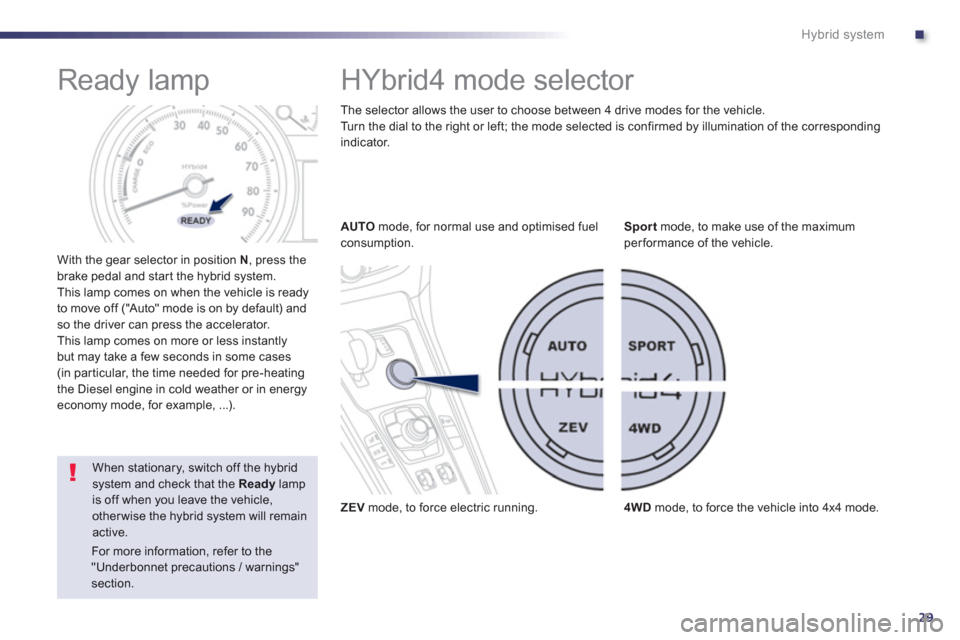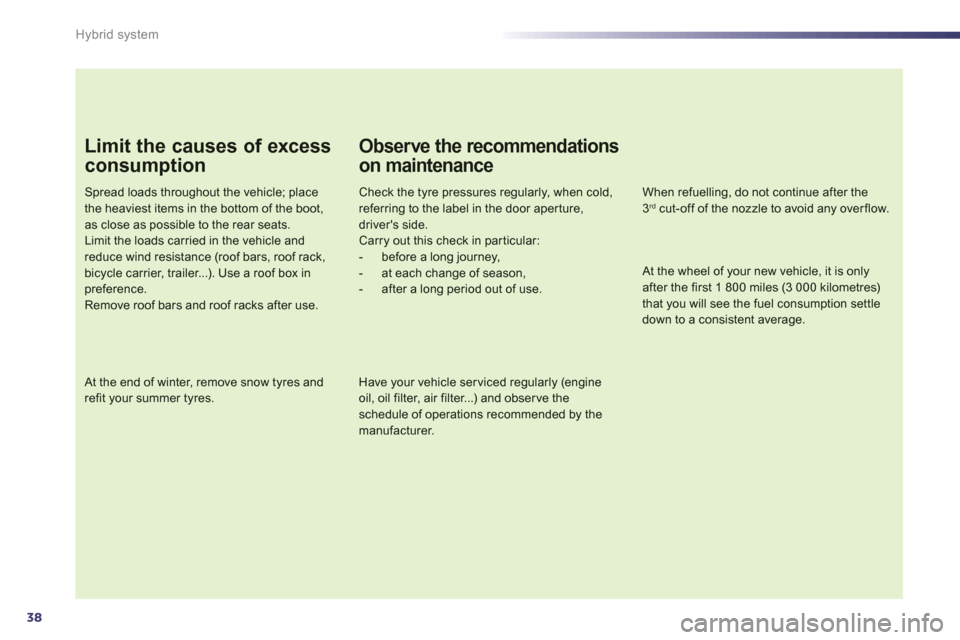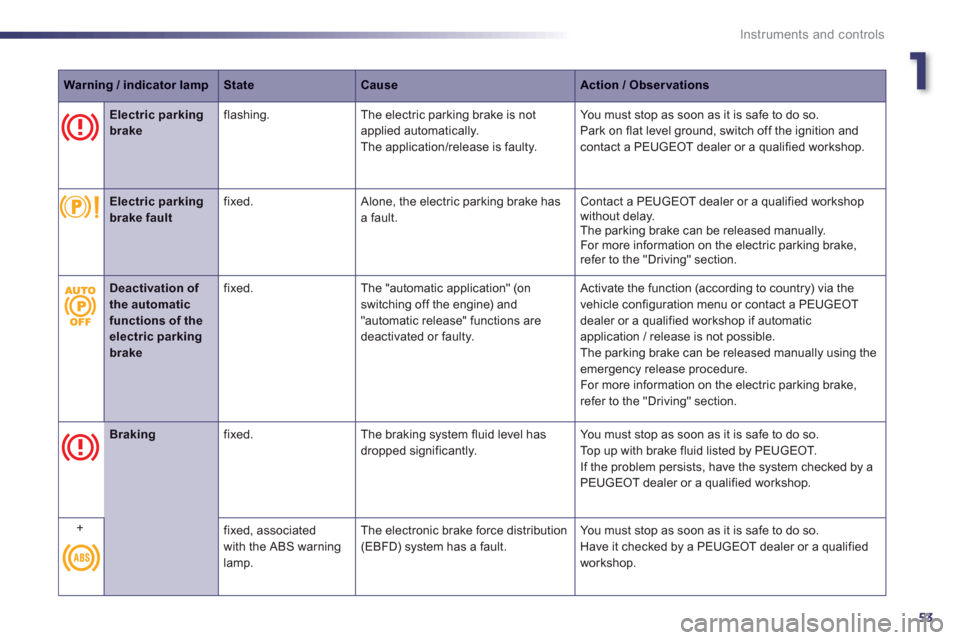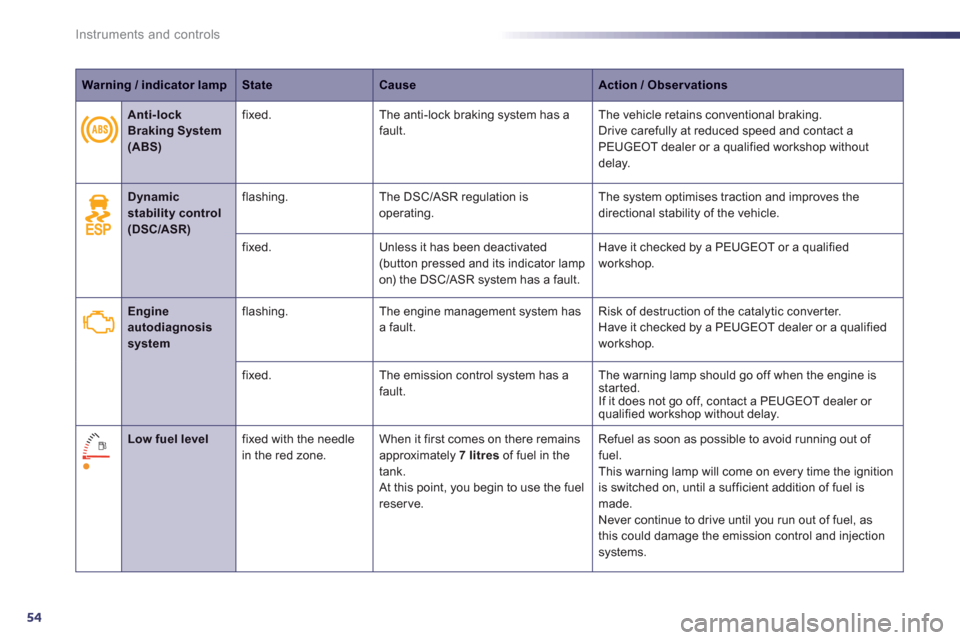2012 Peugeot 508 RXH check engine
[x] Cancel search: check enginePage 5 of 304

.
.
Contents
Child seats 158
ISOFIX child seats 164
Child lock 167
Child safety
Direction indicators 168
Emergency or assistance call 169
Horn 169
ESP system 170
Seat belts 173
Airbags 176
Safety
Te m p o r a ry puncture repair kit 180
Changing a wheel 186
Changing a bulb 191
Changing a fuse 198
12 V battery 202
Energy economy mode 205
Changing a wiper blade 206
Recovering the vehicle 207
Vehicle recovery 209
To w i ng a trailer 210
Fitting roof bars 212
Accessories 213
Practical information
Opening the bonnet 216
Running out of fuel (Diesel) 217
Diesel engine 218
Checking levels 219
Checks 222
Checks
Electric motor 225
Diesel engine 226
Diesel weights 227
Dimensions 228
Identifi cation markings 229
Technical data
Emergency or assistance 231
JBL equipment 233
Peugeot Connect Navigation (RT6) 235
Audio equipment and telematics
Alphabetical index
Visual search
Page 7 of 304

.
5
Familiarisation
For economical driving, caring for the environment
The fuel consumptionof a vehicle varies greatly:
- according to the driver's style of driving
(moderate, aggressive, fast, ...),
- according to the type of journeys
made (urban, main road, motorway, flowing, heavy traffic, …) and the speed.
Main recommendations for driving economically
Hybrid mode selector
To optimise fuel consumption, use the Automodeof the selector whenever possible (the mode is activated
automatically when starting) including for urban journeys.
This mode optimises the use of the energy sources (internal combustion engine and/or electric) contrary to other modes, which are for use in par ticular cases.
Gear lever
Use the automatic
mode A
as much as possible as this optimises gear changes to suit the requirements.
Drive smoothly
Stay in the "eco" zone
displayed in the energy consumption / generation indicator: accelerate gently, drive atsteady speeds using the speed limiter or cruise control as soon as possible. Use the "charge" zone: anticipate the need to slow down by taking your foot off the accelerator rather than
braking. The movement of the energy consumption / generation indicator needle (into the "charge" zone), shows
the level of energy recovery.
Consumption history
See the impact of your style of driving and the type of journey by reviewing the history of your energyconsumption. Refer to the "Multifunction screens" section.
Causes of high consumption and checks
As with any vehicle, limit overloading, wind resistance (windows open above 30 mph (50 km/h), roof rack, loaded
or not, …), the use of power consumers (air conditioning, heated seats, heated rear screen, …).
Obser ve the recommendations on checks (regular check of tyre pressures, correct tyre pressures, …) and routine servicing.
Page 31 of 304

.
29
Hybrid system
Ready lamp
With the gear selector in position N, press the
brake pedal and star t the hybrid system.
This lamp comes on when the vehicle is read
y
to move off ("Auto" mode is on by default) andso the driver can press the accelerator.
This lamp comes on more or less instantlybut may take a few seconds in some cases (in par ticular, the time needed for pre-heating
the Diesel engine in cold weather or in energy economy mode, for example, ...).
HYbrid4 mode selector
AUTOmode, for normal use and optimised fuelconsumption.
ZEVmode, to force electric running.S
portmode, to make use of the maximum
performance of the vehicle.
4WDmode, to force the vehicle into 4x4 mode.
When stationary, switch off the hybridsystem and check that the Readylamp is off when you leave the vehicle,otherwise the hybrid system will remainactive. Th
e selector allows the user to choose between 4 drive modes for the vehicle.
Turn the dial to the right or left; the mode selected is confirmed by illumination of the corresponding indicator.
For more information, refer to the "Underbonnet precautions / warnings" section.
Page 40 of 304

38
Hybrid system
Limit the causes of excess
consumption
Spread loads throughout the vehicle; placethe heaviest items in the bottom of the boot,as close as possible to the rear seats.Limit the loads carried in the vehicle andreduce wind resistance (roof bars, roof rack,bicycle carrier, trailer...). Use a roof box in preference.Remove roof bars and roof racks after use.
At the end of winter, remove snow tyres and refit your summer tyres.
Observe the recommendations
on maintenance
Check the tyre pressures regularly, when cold, referring to the label in the door aper ture, driver's side. Carry out this check in par ticular:
- before a long journey,
- at each change of season,
- after a long period out of use.
Have your vehicle ser viced regularly (engine oil, oil filter, air filter...) and obser ve the schedule of operations recommended by the
manufacturer.
When refuelling, do not continue after the3 rd
cut-off of the nozzle to avoid any overflow.
At the wheel of your new vehicle, it is onlyafter the first 1 800 miles (3 000 kilometres) that you will see the fuel consumption settle down to a consistent average.
Page 55 of 304

1
53
Instruments and controls
Warning / indicator lampStateCauseAction / Observations
Electric parking brake
flashing.The electric parking brake is not
applied automatically.
The application/release is faulty. You must stop as soon as it is safe to do so.
Park on flat level ground, switch off the ignition and contact a PEUGEOT dealer or a qualified workshop.
Electric parking brake fault
fixed. Alone, the electric parking brake has a fault. Contact a PEUGEOT dealer or a qualified workshop
without delay.
The parking brake can be released manually.
For more information on the electric parking brake,
refer to the "Driving" section.
Braking
fixed. The braking system fluid level has
dropped significantly. You must stop as soon as it is safe to do so.
Top up with brake fluid listed by PEUGEOT.
If the problem persists, have the system checked by a
PEUGEOT dealer or a qualified workshop.
+
fixed, associated
with the ABS warninglamp. Th
e electronic brake force distribution(EBFD) system has a fault. You must stop as soon as it is safe to do so.
Have it checked by a PEUGEOT dealer or a qualified
workshop.
Deactivation of the automatic functions of the electric parkingbrake
fixed. The "automatic application" (on switching off the engine) and
"automatic release" functions aredeactivated or faulty.
Activate the function (according to country) via the
vehicle configuration menu or contact a PEUGEOT
dealer or a qualified workshop if automatic
application / release is not possible.
The parking brake can be released manually using the emergency release procedure.
For more information on the electric parking brake,
refer to the "Driving" section.
Page 56 of 304

54
Instruments and controls
Warning / indicator lampStateCauseAction / Observations
Dynamic stability control(DSC/ASR)
flashing. The DSC/ASR regulation is
operating. The system optimises traction and improves the
directional stability of the vehicle.
fixed. Unless it has been deactivated(button pressed and its indicator lamp
on) the DSC/ASR system has a fault.Have it checked b
y a PEUGEOT or a qualified
workshop.
Engine autodiagnosis system
flashing.The engine management system hasa fault. Risk of destruction of the catalytic conver ter.
Have it checked by a PEUGEOT dealer or a qualified
workshop.
fixed.The emission control system has afault. The warning lamp should go off when the engine is started.
If it does not go off, contact a PEUGEOT dealer or
qualified workshop without delay.
Low fuel levelfixed with the needle
in the red zone. When it first comes on there remainsapproximately 7 litresof fuel in the
tank.
At this point, you begin to use the fuel reserve.Refuel as soon as possible to avoid runnin
g out of
fuel.This warning lamp will come on every time the ignition
is switched on, until a sufficient addition of fuel is made.
Never continue to drive until you run out of fuel, as
this could damage the emission control and injectionsystems.
Anti-lockBraking System(ABS)
fixed. The anti-lock braking system has a
fault. The vehicle retains conventional braking.
Drive carefully at reduced speed and contact a
PEUGEOT dealer or a qualified workshop without
dela
y.
Page 58 of 304

56
Instruments and controls
Warning / indicator lampStateCauseAction / Observations
Airbagson temporarily. This lamp comes on for a fewseconds when you turn on
the ignition, then goes off.This lamp should
go off when the engine is started.
If it does not go off, contact a PEUGEOT dealer or a
qualified workshop.
fixed.One of the airbag or seat beltpretensioner systems has a fault.Have it checked by a PEUGEOT dealer or a qualified
workshop.
Directionalheadlampsflashing. The directional headlamps systemhas a fault.Have it checked by a PEUGEOT dealer or a qualified
workshop.
Seat belt(s) not fastened / unfastenedfixed then flashin
gaccompanied by anincreasing audible
signal. A
seat belt has not been fastened or has been unfastened.Pull the strap then inser t the tongue in the buckle.
Page 60 of 304

58
Instruments and controls
*
According to country.
CHECK (vehicle autotest)
Automatic CHECK
With the key in the ignition on position, all of the
warning lamps for the functions tested are displayed.
They are switched off after a few seconds.
At the same time, an automatic CHECK (vehicle
autotest) is carried out.
In the presence of a fault
A "minor" fault has been detected: the warning
lamp(s) are displayed then go off.You can star t your vehicle; however, contact a
PEUGEOT dealer or a qualified workshop assoon as possible.
A "major" fault has been detected: theassociated warning lamps(s) remain onaccompanied by the STOP or SERVICE
warning lamp.
Do not star t your vehicle. Call a PEUGEOT dealer or a qualified
wor
kshop without delay.
Manual CHECK
Pressing the "CHECK"
button on theinstrument panel star ts the manual CHECK(vehicle autotest).
This function enables you to recall at any time(with the key in the ignition on position or with
the engine running), the aler ts present.
The passenger's airbag deactivated warning lamp * remains on while the airbag is deactivated.
With the engine running and the vehiclemoving, the instrument panel displays
the
warning lamps (in the event of a fault). I
f no "major" fault is found, you can star t your
vehicle.
Lighting dimmer control
With the headlamps on, press button B
to
increase the brightness of the instruments and controls and the interior mood lighting or button Ato reduce it.
As soon as the lighting reaches the required
level of brightness, release the button.